Open Instagram on your phone and you’ll probably be greeted with women with picture-perfect glutes. Don’t get us wrong; we aren’t complaining.
Furthermore, it isn’t only the ladies that are after a big and shapely derrière. Men too have joined their counterparts in the pursuit.
Contrary to what most people think, a big butt is not just for aesthetics. The glutes are the biggest and strongest muscle group in the human body. They help maintain your posture, run, walk, climb stairs, and squat.
However, most people never make much progress in the department. But why is that, you ask?
Ask a fitness aficionado about building a bigger butt, and they’ll probably point you towards the squat, lunge, or hip press. While exercises are important for gaining glute size, they don’t work in isolation.
Like all other muscles in your body, the glutes need a balance of nutrition, training, and rest to grow bigger and stronger. This article sheds light on the 27 best foods to take your butt gains to the next level.
Level Up Your Fitness: Join our 💪 strong community in Fitness Volt Newsletter. Get daily inspiration, expert-backed workouts, nutrition tips, the latest in strength sports, and the support you need to reach your goals. Subscribe for free!
Can Food Increase Your Body Mass?
It doesn’t matter how hard and heavy you squat; resistance training can only get your glute gains so far. You need to be in a calorie surplus if your goal is to pack on muscle mass. In a calorie surplus, you eat more calories than you expend in a day. The excess calories repair the muscle fibers damaged from training, helping them grow back bigger and stronger.
Turning your pancakes into ripe peaches requires following a robust diet program. While protein is the main muscle-building macronutrient, you’ll also need to consume a healthy dose of carbs, fats, and micronutrients.
Not sure how many calories you need to grow a bigger butt? Do not fret; we have got you covered. Check out our convenient online calculator to find out your daily calorie goals.
What Foods Make Your Butt Bigger?
Below is an exhaustive list of 27 foods that’ll help you build a bigger and stronger butt:
1. Eggs

Eggs are arguably one of the most popular, convenient, and affordable protein sources in a lifter’s nutrition regimen. The egg whites are packed with protein, and the yellows are a source of healthy fat.
Nutritional Information (1 Whole Egg):
- Calories: 72
- Carbohydrates: 0.4g
- Protein: 6.3g
- Fat: 4.8g
Micronutrients: Selenium, vitamin B12, riboflavin, phosphorus, vitamin A, vitamins B2, B5, and folate.
How Can Eggs Make My Butt Bigger?
Eggs contain the amino acid leucine that stimulates muscle synthesis and reduces muscle protein breakdown. Leucine combined with a high-quality protein dose can kickstart your butt gains.
How Often Should I Eat Eggs?
Most fitness enthusiasts have eggs as part of their breakfast as they are easy to cook. Depending on your lifestyle, you can eat eggs in breakfast, lunch, or dinner. Furthermore, their versatility allows you to consume them raw, cooked, or combined with other food in exotic recipes.
However, studies have shown that eggs become more digestible when heated. A separate study found that the human body could use 91 percent of the protein in cooked eggs, compared to only 51 percent in raw eggs. [1][2]
How Many Eggs Can I Have at a Time?
The number of eggs you should be eating at a time will depend on your daily protein goal. However, you shouldn’t try to max out your protein intake in a single meal and break them down into smaller meals throughout the day.
What is the Best Way to Consume Eggs?
Shorter and lower-heat cooking methods cause less cholesterol oxidation and help retain most of an egg’s nutrients. Hence, you should prefer to eat poached and boiled (hard or soft) eggs.
2. Legumes
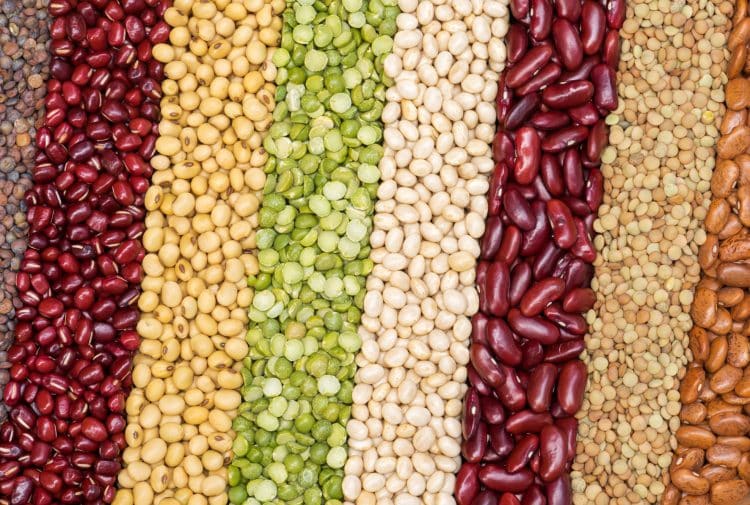
Legumes are among the primary source of protein for vegetarians and vegans. Even if you’re a non-vegetarian, you could boost your protein intake by adding beans, lentils, peas, and peanuts to your meals.
Nutritional Information (1 cup—145g):
- Calories: 118
- Carbohydrates: 21g
- Protein: 8g
- Fat: 0.6g
Micronutrients: Fiber, protein, carbohydrate, B vitamins, iron, copper, magnesium, manganese, zinc, and phosphorous.
How Often Should I Eat Legumes?
The Dietary Guidelines for Americans recommends consuming three cups (six servings) of legumes per week. Your legume intake frequency will depend on your calorie and macro goals.
How Many Legumes Can I Have at a Time?
You should stick with your daily calorie and macro goals while planning your meals. Eating two cups of legumes with a high-quality source of carbs can fill you up.
What is the Best Way to Consume Legumes?
It will depend on the legume and your dietary preferences.
3. Salmon
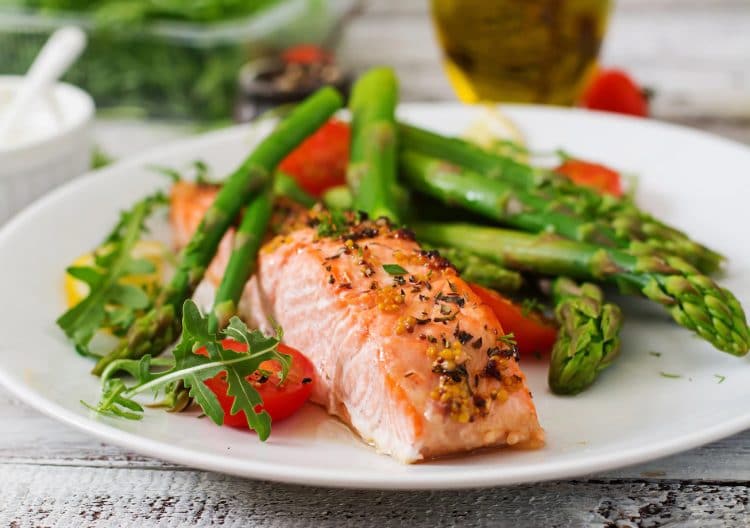
Salmon is a godsend for lifters who want a low-carb high-protein calorie source. Plus, they are rich in omega-3 fatty acids, which among other things, are great for maintaining brain and joint health.
Nutritional Information (100g):
- Calories: 208
- Carbohydrates: 0g
- Protein: 20g
- Fat: 13g
Micronutrients: Omega-3 fatty acids, magnesium, potassium, phosphorus, zinc, and selenium.
How Can Salmon Make My Butt Bigger?
Salmon is packed with booty-building nutrients. It contains omega-3 that reduces inflammation, which can quicken muscle recovery and growth.
How Often Should I Eat Salmon?
Per FDA, fish and shellfish such as salmon, catfish, tilapia, lobster, and scallops are safe to eat 2-3 times a week, or 8-12 ounces per week. However, eating it every day isn’t dangerous, and you could add a serving of salmon to your daily diet plan.
How Much Salmon Can I Have at a Time?
Since salmon is a fatty fish, eating too much of it can lead to weight gain. You should consult your dietitian about your daily salmon intake.
What is the Best Way to Consume Salmon?
You can choose to pan-fry, roast, grill, or poach salmon or cook it in parchment.
4. Tuna
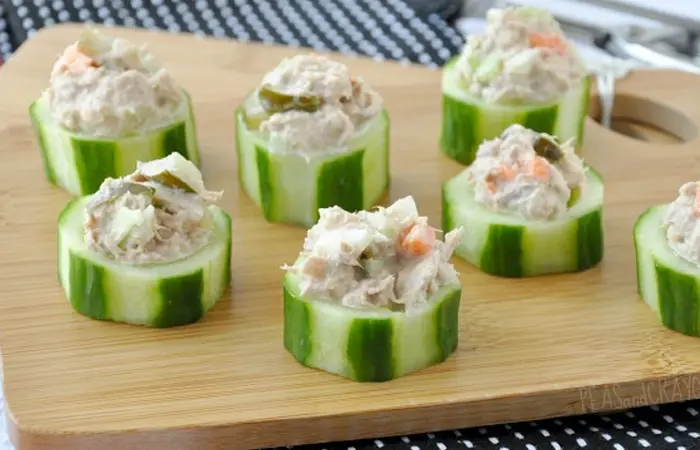
If you thought salmon was the best butt-building food source, wait until you learn about tuna’s nutritional info. The fast-absorbing low-calorie protein source is one of the best post-workout foods.
Nutritional Information (100g):
- Calories: 132
- Carbohydrates: 0g
- Protein: 28g
- Fat: 1.3g
Micronutrients: Omega-3 fatty acids, magnesium, potassium, phosphorus, zinc, and selenium.
How Can Tuna Make My Butt Bigger?
The budget-friendly seafood is packed with omega-3 fatty acids. Research shows that omega-3 fatty acids can help prevent muscle mass loss and muscle wasting in older adults during periods of inactivity, meaning you’ll be able to hold your booty gains for longer. [3]
How Often Should I Eat Tuna?
FDA recommends that adults eat 3–5 ounces (85–140 grams) of fish 2–3 times a week to get enough omega-3 fatty acids and other beneficial nutrients. As with all other food sources on this list, your tuna intake will depend on your calorie goals and macronutrient breakup.
How Much Tuna Can I Have at a Time?
Per the FDA recommendation, you should not eat more than 85-140 grams of tuna in a single meal.
What is the Best Way to Consume Tuna?
Grilling or broiling fresh tuna is one of the healthiest ways to eat tuna. These techniques retain nutrients and taste delicious.
5. Mushroom
Mushrooms are one of the most underrated foods when it comes to building a chiseled physique. They are rich in carbs and protein and can add size to your glutes.
Nutritional Information (100g):
- Calories: 22
- Carbohydrates: 3.3g
- Protein: 3.1g
- Fat: 0.3g
Micronutrients: B vitamins, selenium, copper, potassium, and fiber.
How Can Mushrooms Make My Butt Bigger?
This balanced source of protein and carbs is a great food source for vegetarians and vegans to build muscle mass.
How Often Should I Eat Mushrooms?
Mushrooms can be a part of your daily meal plan.
What is the Best Way to Consume Mushrooms?
Mushrooms could be added to soups, salads, sandwiches, or wraps.
6. Tilapia
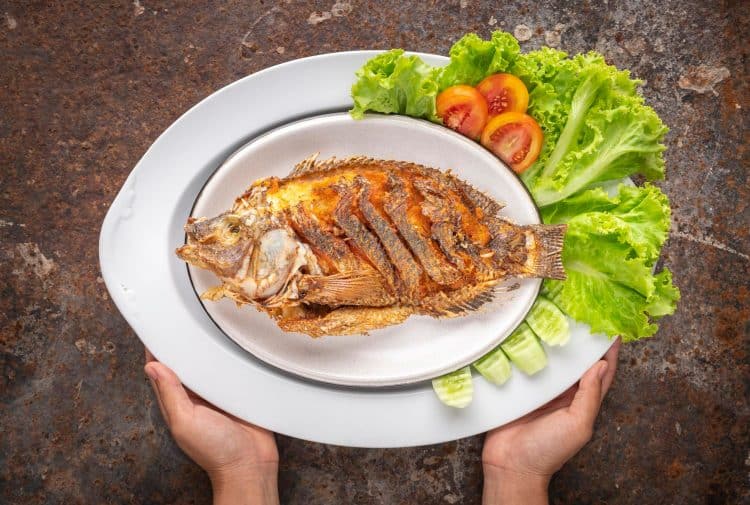
Tilapia is a budget-friendly white fish that is protein-rich and easily available.
Nutritional Information (1 Whole Egg):
- Calories: 129
- Carbohydrates: 0g
- Protein: 26g
- Fat: 2.7g
Micronutrients: Omega-3 fatty acids, magnesium, potassium, phosphorus, zinc, selenium, choline, and niacin.
How Often Should I Eat Tilapia?
The recommended serving size of tilapia is the same as tuna and salmon.
7. Avocados
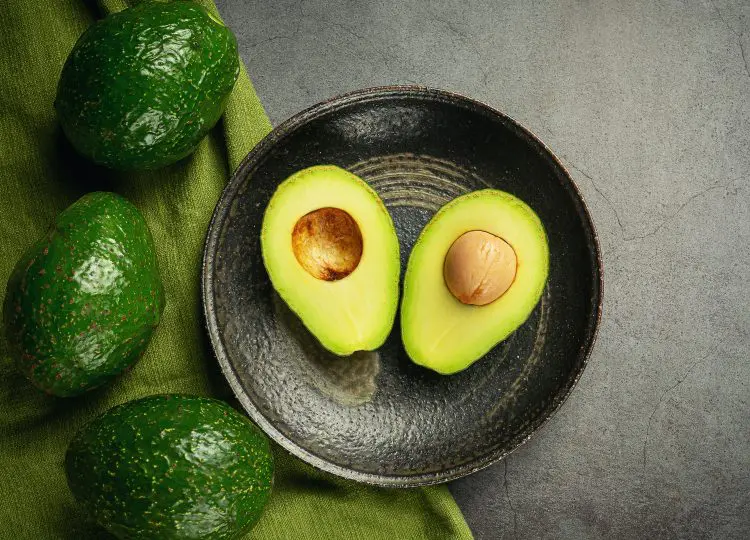
Avocados are one of the healthiest and most nutrient-dense sources of fats. They can help gain mass on your butt and reduce bad cholesterol levels in your body.
Nutritional Information (1 Medium Avocado):
- Calories: 240
- Carbohydrates: 13g
- Protein: 3g
- Fat: 22g
Micronutrients: Vitamin C, potassium, vitamin B6, and magnesium.
How Can Avocados Make My Butt Bigger?
The magnesium in avocados can help improve muscle contraction and reduce inflammation after exercise. Furthermore, they can reduce exercise-induced damage and improve recovery between workouts.
How Often Should I Eat Avocados?
You could eat avocados every day.
How Many Avocados Can I Have at a Time?
If you follow a 2,000-calorie-a-day diet, you should not consume more than 30 grams of fat per day, and one medium-sized avocado contains 22 grams of fat. Hence, you should not consume more than one avocado a day if you’re on a calorie-restricted diet.
What is the Best Way to Consume Avocados?
You could have avocado with eggs for breakfast or add it to salads, wraps, and sandwiches.
8. Spinach

Green leafy vegetables are a must in any diet program. They are loaded with nutrients and antioxidants and can improve eye health, reduce oxidative stress, help prevent cancer, and reduce blood pressure levels.
Nutritional Information (100g):
- Calories: 23
- Carbohydrates: 3.6g
- Protein: 2.9g
- Fat: 0.4g
Micronutrients: Vitamin A, vitamin C, vitamin K, fiber, folate, iron, and potassium.
How Can Spinach Make My Butt Bigger?
Spinach contains anti-inflammatory minerals that can help you recover faster between workouts. It can also help improve your endurance, allowing you to train harder and longer.
How Much Spinach Can I Eat at a Time?
Experts believe a bowl of spinach a day is safe for most people.
What is the Best Way to Consume Spinach?
You could savor spinach the Popeye way—straight out of a can, eat it with your meals, or down it in the form of a smoothie.
9. Quinoa
Quinoa is a plant seed that is considered a superfood. Although quinoa is prepared and consumed like a cereal grain, it doesn’t grow on grass like wheat, oats, and rice.
Nutritional Information (100g):
- Calories: 120
- Carbohydrates: 21.3g
- Protein: 4.4g
- Fat: 1.9g
Micronutrients: Manganese, phosphorus, copper, folate, iron, magnesium, and zinc.
How Can Quinoa Make My Butt Bigger?
Quinoa is loaded with carbs and is great for people trying to add muscle mass.
How Often Should I Eat Quinoa?
Since quinoa is a filling food, you can have it once or twice a day.
How Much Quinoa Can I Have at a Time?
The amount of quinoa you can have in a single serving will depend on your calorie goals.
What is the Best Way to Consume Quinoa?
Quinoa is usually boiled and can be added to salads, used to thicken soups, or eaten as a side dish or breakfast porridge.
10. Milk
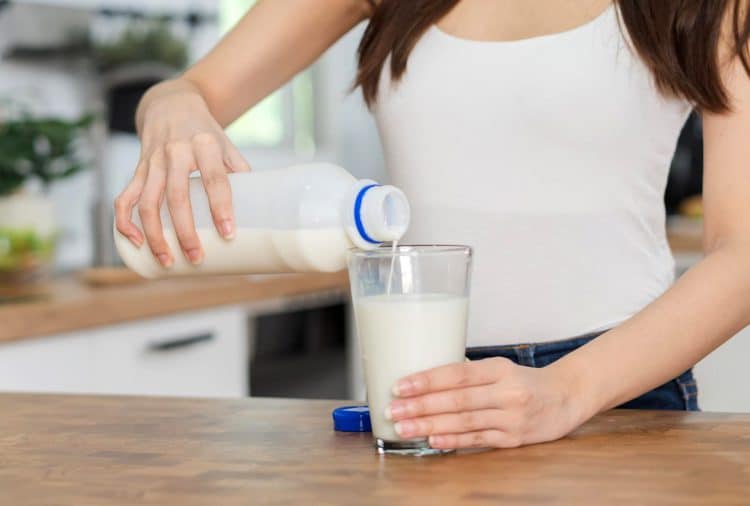
Milk is one of the most nutritious foods. It is convenient, versatile, and delicious. It is a part of most people’s diet in one form or the other.
Nutritional Information (1 cup—244g):
- Calories: 103
- Carbohydrates: 12g
- Protein: 8g
- Fat: 2.4g
Micronutrients: calcium, riboflavin, phosphorous, vitamins A and B12, potassium, magnesium, zinc, and iodine.
How Can Milk Make My Butt Bigger?
Milk contains fast and slow-digesting proteins to help build muscle mass. Per a study, drinking milk post-workout can enhance post-exercise muscle protein synthesis and rehydration, restore depleted energy, and reduce muscle soreness. [4]
How Often Should I Drink Milk?
You could drink milk multiple times a day.
How Much Milk Can I Have at a Time?
The US national dietary guidelines recommend that adults should drink three cups or 732 mL/d of milk daily. However, no side effects were noted when a subject drank more than three cups.
What is the Best Way to Consume Milk?
You could consume milk directly out of a carton, mixed in a smoothie, whey protein, or in a recipe. Choose full-fat milk to get a round and shapely butt.
11. Tofu
Tofu is produced from condensed soy milk. This protein-rich food source is the equivalent of cheese for vegans.
Nutritional Information (1 block—122g):
- Calories: 177
- Carbohydrates: 5.36g
- Protein: 15.57g
- Fat: 12.19g
Micronutrients: Cobalt, chromium, iron, selenium, and zinc.
How Can Tofu Make My Butt Bigger?
A study revealed that soy protein is more effective than casein protein and is more effective at increasing muscle volume in people with low physical activity. [5]
How Often Should I Eat Tofu?
Eating soy products every day is generally considered safe.
How Much Tofu Can I Have at a Time?
It will depend on your daily caloric needs and macro goals.
What is the Best Way to Intake Tofu?
You can add raw tofu to smoothies, purées, and blended sauces or use it as a base in homemade ice cream.
12. Lean Ground Beef

Lean ground beef is packed with protein and can fluff up your pancakes.
Nutritional Information (100g):
- Calories: 230
- Carbohydrates: 0g
- Protein: 28g
- Fat: 12g
Micronutrients: Niacin, vitamin B12, selenium, and zinc.
How Can Lean Ground Beef Make My Butt Bigger?
A 100g serving of lean ground beef contains 28 grams of muscle-building protein.
How Often Should I Eat Lean Ground Beef?
Eating beef every day is not recommended. You can safely eat lean red meat up to twice a week.
How Much Lean Ground Beef Can I Have at a Time?
Your lean ground beef serving will depend on your calorie and protein goals.
What is the Best Way to Consume Lean Ground Beef?
You can pan-fry lean ground beef, use it as a burger patty, or add it to a taco salad, among other things.
13. Chicken Breast
The good old chicken breast is a staple in most bodybuilding diet routines. It is filled to the brim with protein and is satiating.
Nutritional Information (100g):
- Calories: 165
- Carbohydrates: 0g
- Protein: 31g
- Fat: 3.6g
Micronutrients: Iron, vitamin B12, zinc, B complex, selenium, and phosphorus.
How Can Chicken Breast Make My Butt Bigger?
Protein-rich chicken breast can help gain muscle size.
How Often Should I Eat Chicken Breast?
Make chicken breast a part of your daily routine to achieve the best results.
How Much Chicken Breast Can I Have at a Time?
Depends on your protein and calorie goals.
What is the Best Way to Consume Chicken Breast?
Level Up Your Fitness: Join our 💪 strong community in Fitness Volt Newsletter. Get daily inspiration, expert-backed workouts, nutrition tips, the latest in strength sports, and the support you need to reach your goals. Subscribe for free!
You’ll find hundreds, if not thousands, of chicken breast recipes on the internet to satisfy your taste buds.
14. Nut Butter
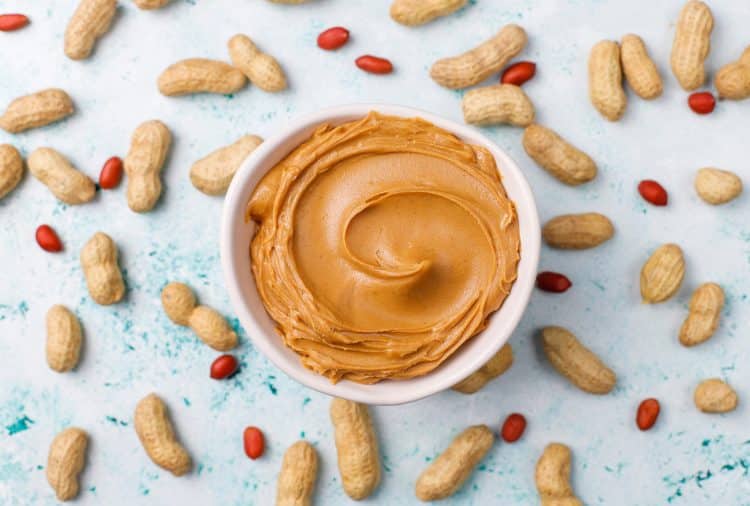
Nut butter has grown in popularity in recent years. They have become the spread of choice for many fitness enthusiasts. Almond and peanut butter are the most popular types of nut butter.
Nutritional Information (2tbsp of Peanut Butter):
- Calories: 188
- Carbohydrates: 6g
- Protein: 8g
- Fat: 16g
Micronutrients: Vitamin E, B3, B6, folate, magnesium, copper, and manganese.
How Can Nut Butter Make My Butt Bigger?
Nut butter is rich in fats which can help power your workouts and keep your bones and heart healthy. Plus, they pack a solid punch of muscle-building protein.
How Often Should I Eat Nut Butter?
You can take up to two tablespoons of nut butter every day.
How Much Nut Butter Can I Have at a Time?
Two tablespoons of nut butter contain 16 grams of fats, which is half of the daily requirement for a person on a 2,000 calories a day program.
What is the Best Way to Consume Nut Butter?
Most people consume nut butter straight out of a jar, use it as a spread, or add it to shakes or smoothies.
15. Brown Rice
Brown rice is a popular carb source. Many athletes are switching from the OG white to brown rice for better nutritional value. However, the jury is still out on which is better, and both enjoy a cult following.
Nutritional Information (100g):
- Calories: 111
- Carbohydrates: 23g
- Protein: 2.6g
- Fat: 0.9g
Micronutrients: Calcium, iron, manganese, magnesium, phosphorus, selenium, vitamin B1,
and vitamin B6.
How Can Brown Rice Make My Butt Bigger?
Carbs are important for muscle building because they’re protein-sparing, meaning the body looks to glycogen instead of breaking down muscle tissue for energy. Consuming carbs post-workout can prevent muscle loss and help repair muscles.
How Often Should I Eat Brown Rice?
You can have brown rice as a carb source multiple times a day.
How Much Brown Rice Can I Have at a Time?
It depends on your daily carb and calorie goal.
What is the Best Way to Consume Brown Rice?
Most people eat brown rice as a side dish.
16. Cottage Cheese
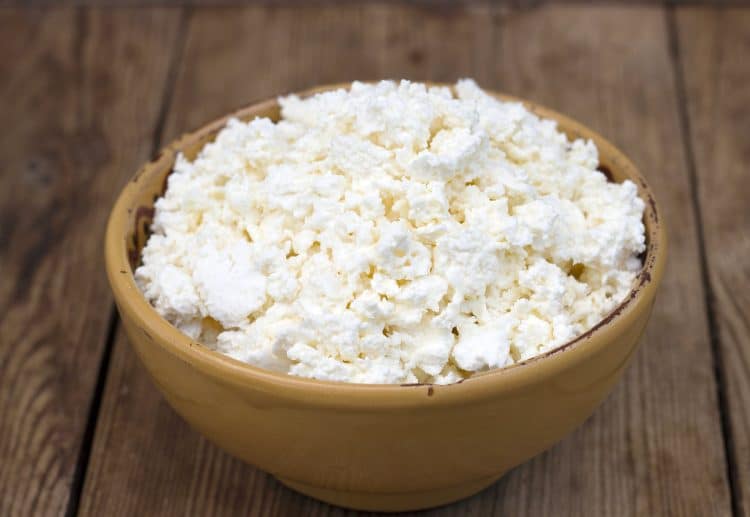
Cottage cheese is one of the cleanest sources of protein. It is a go-to for vegetarians and vegans. It is not only high in protein but also contains a healthy dose of essential nutrients.
Nutritional Information (100g):
- Calories: 98
- Carbohydrates: 3.4g
- Protein: 11g
- Fat: 4.3g
Micronutrients: Vitamin B6, choline, zinc, copper, phosphorus, sodium, selenium, vitamin B12, riboflavin, calcium, and folate.
How Can Cottage Cheese Make My Butt Bigger?
Protein accounts for over 70 percent of calories in this high-protein food, which can help you build muscle mass.
How Often Should I Eat Cottage Cheese?
You can eat cottage cheese as part of your daily routine.
How Much Cottage Cheese Can I Have at a Time?
It will depend on your daily protein and calorie goals.
What is the Best Way to Consume Cottage Cheese?
You can have cottage cheese in pancakes, waffles, salads, granola, sour cream substitute, smoothie, and toast.
17. Greek Yogurt
Greek yogurt is made by fermenting yogurt and then straining whey and other liquids during the final processing steps. It comes in many varities, including full fat, reduced fat, and fat-free.
Nutritional Information (100g):
- Calories: 59
- Carbohydrates: 3.6g
- Protein: 10g
- Fat: 0.4g
Micronutrients: Vitamin B12, riboflavin (B2), selenium, calcium, phosphorus, zinc, pantothenic acid, vitamin A, and potassium.
How Can Greek Yogurt Make My Butt Bigger?
You should choose a full-fat unflavored Greek yogurt if you want a bigger butt.
How Often Should I Eat Greek Yogurt?
Greek yogurt can be a part of your daily routine.
How Much Greek Yogurt Can I Have at a Time?
It will depend on your protein and calorie goals.
What is the Best Way to Consume Greek Yogurt?
You can eat Greek yogurt as a side, topping, or a snack between meals.
18. Chickpeas
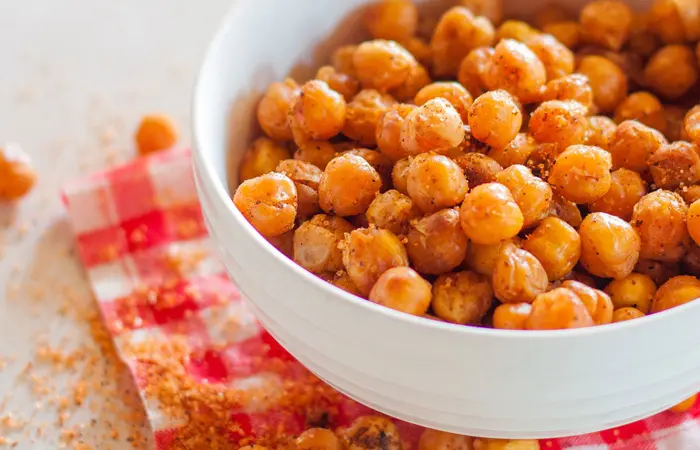
Chickpeas are an annual legume and are packed with protein. They are a must-have for vegetarians and vegans to spike their protein intake. Plus, the high-carb content of chickpeas makes it a good pre-workout meal as it can help replenish your glycogen levels.
Nutritional Information (100g):
- Calories: 364
- Carbohydrates: 61g
- Protein: 19g
- Fat: 6g
Micronutrients: Vitamin B6, folate, thiamin, riboflavin, niacin, and pantothenic acid.
How Can Chickpeas Make My Butt Bigger?
Chickpeas contain a healthy carb and protein content, making them a good food source to be had pre or post-workout.
How Often Should I Eat Chickpeas?
You can have chickpeas as a staple in your diet regimen.
How Many Chickpeas Can I Have at a Time?
It will depend on your dietary preferences, taste, and target calorie and protein goals.
What is the Best Way to Consume Chickpeas?
You could:
- Stuff them into sandwiches or pita pockets.
- Add them to your pasta.
- Make hummus.
- Roast them.
- Add them to curry.
- Use in a salad.
19. Tomatoes
You probably weren’t expecting to see tomatoes on this list. Research has shown that tomatoes can prevent age-associated muscle strength decline. Plus, they have anti-inflammatory properties that help you recover faster between workouts. [6]
Nutritional Information (100g):
- Calories: 18
- Carbohydrates: 3.9g
- Protein: 0.9g
- Fat: 0.2g
Micronutrients: Vitamin C, potassium, vitamin K, and folate.
How Can Tomatoes Make My Butt Bigger?
Tomatoes prevent age-related strength decline, making them a great addition to your fitness routine. They are mostly water, which will keep you feeling full for longer.
What is the Best Way to Consume Tomatoes?
The versatile food can be added to your diet in several forms.
20. Sweet Potato
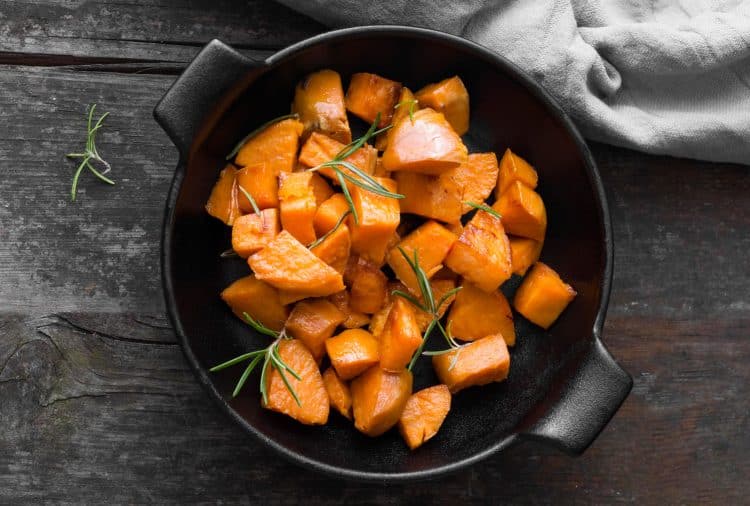
Sweet potatoes are a go-to carb source for most bodybuilders. They are nutritious, satiating, rich in fiber, and delicious. Like their sibling potatoes, they are a convenient food source.
Nutritional Information (100g):
- Calories: 100
- Carbohydrates: 20g
- Protein: 1.6g
- Fat: 0.1g
Micronutrients: Vitamin C, magnesium, calcium, iron, phosphorus, potassium, Vitamin B1, and folic acid.
How Can Sweet Potato Make My Butt Bigger?
They are packed with carbs, which can help you build a bigger derrière.
How Often Should I Eat Sweet Potatoes?
You can eat sweet potatoes every day, given you do not have type 2 diabetes. Simple sugars, such as glucose, fructose, sucrose, and maltose, comprise 32 percent of the carb content.
How Many Sweet Potatoes Can I Have at a Time?
It depends on your appetite and daily calorie and carb goals.
What is the Best Way to Consume Sweet Potatoes?
You can eat them boiled, baked, steamed, or fried.
21. Potatoes
Potatoes are a favorite among athletes to refill their glycogen stores. They also deliver a solid punch of energy to get you through your day.
Nutritional Information (100g):
- Calories: 77
- Carbohydrates: 17g
- Protein: 2g
- Fat: 0.1g
Micronutrients: Potassium, magnesium, vitamin C, vitamin B6, folate, and thiamin.
How Can Potatoes Make My Butt Bigger?
A study found that potatoes combined with resistance training can increase muscle protein synthesis. Plus, it can refuel your glycogen levels to help you train longer and harder. [7]
How Often Should I Eat Potatoes?
Eating one medium-size potato a day can be part of a healthy diet and doesn’t increase cardiometabolic risk—the chances of having diabetes, heart disease, or stroke.
What is the Best Way to Consume Potatoes?
You could eat potatoes as a side as wedges, or chips, add them to recipes or have them boiled or steamed.
22. Nuts
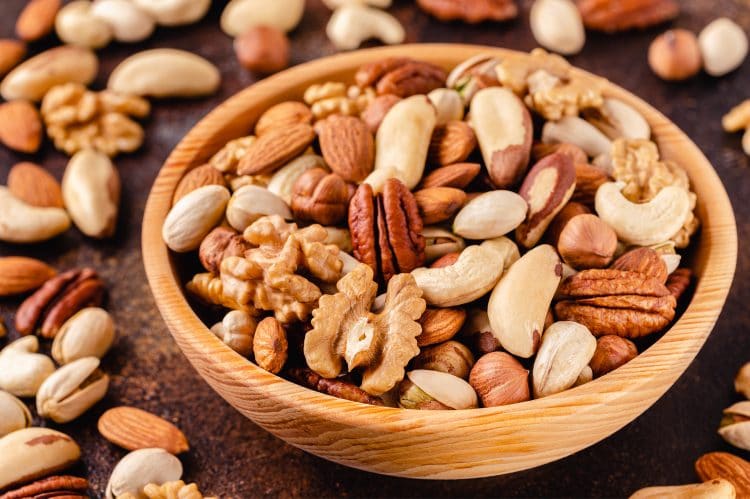
Nuts include pistachios, walnuts, almonds, cashews, pecans, macadamia nuts, peanuts, and hazelnuts. Most fitness enthusiasts include nuts in their routine to ensure they are meeting their daily fats and omega-3 fatty acid requirements.
Nutritional Information (Almond 100g):
- Calories: 100
- Carbohydrates: 22g
- Protein: 21g
- Fat: 49g
Micronutrients: Fibre, vitamin E, calcium, copper, magnesium, ribofla, iron, potassium, zinc and B vitamins, niacin, thiamine, and folate.
How Can Nuts Make My Butt Bigger?
Nuts are a good source of dietary fat that provides so many calories in such a small volume of food. Fats can help hardgainers meet their calorie goals and put on muscle mass.
How Often Should I Eat Nuts?
A single serving of nuts should be enough to help you achieve your daily fat goal.
How Many Nuts Can I Have at a Time?
As a rule of thumb, you should not have more than a handful of nuts at a time.
What is the Best Way to Consume Nuts?
You could eat raw nuts, blend them in your smoothie, or add them to a recipe.
23. Hemp Seeds
Hemp seeds are a healthy fat source that are mostly used by athletes to add flavor and texture to their meals.
Nutritional Information (30g):
- Calories: 166
- Carbohydrates: 2.6g
- Protein: 9.48g
- Fat: 14.6g
Micronutrients: Iron, vitamin E, manganese, magnesium, B vitamins, and zinc.
What is the Best Way to Intake Hemp Seeds?
You could use hemp seeds in salad dressing, rice pilafs, oatmeal, or yogurt or add them to baked goods such as whole wheat muffins.
24. Flaxseed
Flaxseeds are small oil seeds that contain omega-3 fats and fiber. Plus, they contain ALA acid, one of two fatty acids the human body cannot produce and must be consumed with food.
Nutritional Information (100g):
- Calories: 534
- Carbohydrates: 29g
- Protein: 18g
- Fat: 42g
Micronutrients: Manganese, magnesium, phosphorus, copper, and vitamin B1 (thiamine).
How Can Flaxseed Make My Butt Bigger?
They can help improve your digestion, improving nutrient absorbability.
What is the Best Way to Intake Flaxseeds?
They are mostly used in a powdered form and are added to meals or smoothies.
25. Chia Seeds
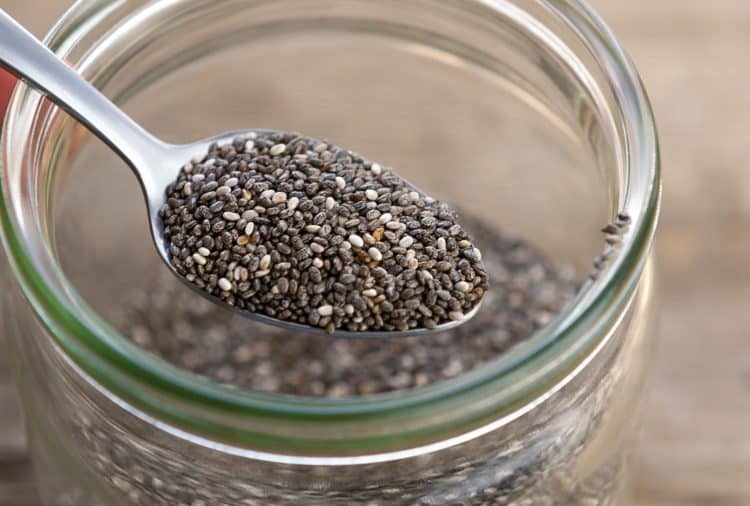
Antioxidants found in chia seeds can help fight free radicals in your body. Furthermore, they can reduce inflammation and improve bone health.
Nutritional Information (100g):
- Calories: 486
- Carbohydrates: 42g
- Protein: 17g
- Fat: 31g
Micronutrients: Calcium, manganese, magnesium, selenium, copper, iron, phosphorus.
How Can Chia Seeds Make My Butt Bigger?
Free radicals cause oxidative stress and cell damage. Eating foods rich in antioxidants like chia seeds can help limit free radicals.
How Often Should I Take Chia Seeds?
A common dosage recommendation is 0.7 ounces (20 grams or about 1.5 tablespoons) of chia seeds twice per day.
What is the Best Way to Consume Chia Seeds?
You could add chia seeds to salad dressings or use them in smoothies, puddings, or other baked goods.
26. Pumpkin Seeds
Pumpkin seeds have the same amount of fats and protein per 100 grams.
Nutritional Information (100g):
- Calories: 446
- Carbohydrates: 54g
- Protein: 19g
- Fat: 19g
Micronutrients: Vitamin K, phosphorus, manganese, magnesium, iron, zinc, and copper.
How Can Pumpkin Seeds Make My Butt Bigger?
Pumpkin seeds are a great source of dietary fiber, which can help improve nutrient absorption.
How Often Should I Eat Pumpkin Seeds?
The American Heart Association recommends having a quarter cup (30 grams) of pumpkin seeds every day as part of a healthy diet.
What is the Best Way to Consume Pumpkin Seeds?
You could eat raw pumpkin seeds, but they taste especially delicious when roasted.
27. Whey Protein
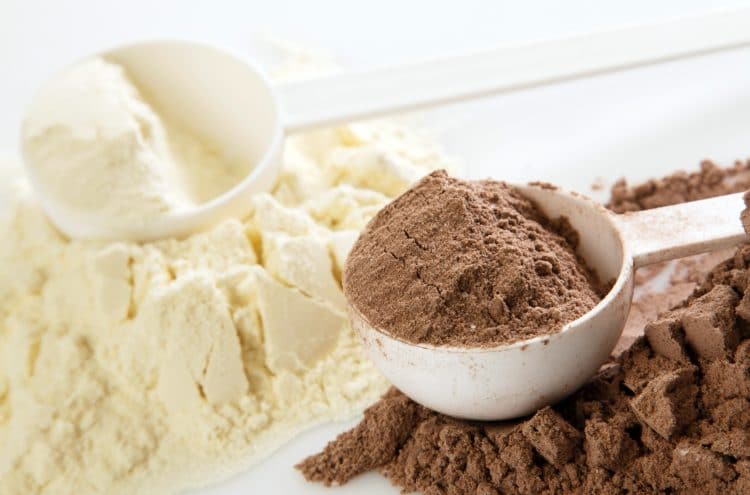
Whey protein is one of the most convenient and effective forms of protein. Protein powders are packed with protein and have a low carb and fat content.
Nutritional Information (ON Whey Protein 30.4g scoop):
- Calories: 117
- Carbohydrates: 3g
- Protein: 24g
- Fat: 1g
How Can Whey Protein Make My Butt Bigger?
Protein is the building block of muscle. Consuming a high-protein diet can help build strong and muscular glutes.
How Often Should I Take Whey Protein?
Depending on your calorie or protein goals, you can consume a whey protein shake pre and post-workout or any time throughout the day.
What is the Best Way to Consume Whey Protein?
You could consume whey protein as a shake or in a recipe.
Related: Find Your Daily Protein Intake
Other Tips for a Bigger Butt
Here are a few other tips for building a bigger rear:
1. Have a Workout Plan
An optimized training program can help focus on the target muscle group and aid in building muscle mass, strength, symmetry, and definition—all of which are necessary for carving an aesthetically appealing physique.
2. Stay Hydrated
About 60 percent of an adult male’s body is water. Dehydration or a lack of water can impair bodily functions. You need to ensure you drink at least a gallon of water every day so that the nutrients are transported to every muscle fiber in your body.
3. Have a Proper Sleep
Your body recovers and rebuilds while you are in deep sleep. You need at least seven to eight hours of sleep every night to ensure you are giving your body enough time to recuperate from your workouts.
Also read: 20 Best Butts on the Internet
Frequently Asked Questions
Can I get a bigger butt without training and with food only?
You will gain weight and size by staying in a calorie surplus. However, where you will put on this size will depend on your genetics. A personalized training plan can help ignite muscle growth in the target muscle group.
Should I eat these foods for making my butt bigger before or after a workout?
You could eat the foods mentioned in this article at any time throughout the day. However, you should talk to your dietician to design a diet that fits your lifestyle.
How to fix a flat butt?
You can fix a flat butt by following a personalized training, diet, and recovery program. Our detailed guide will help you get over the flat butt blues.
What causes a flat butt?
A flat butt is a result of genetics, lack of a nutritious diet, and not exercising.
What exercises make my butt bigger?
Lower body exercises like the squat, lunge, good morning, and Romanian deadlift are a few effective butt-building exercises.
Why is my butt not getting bigger?
You might have hit a plateau if you cannot see gains even after following a macronutrient and calorie-focused diet, personalized training program, and recovery program. You should take a couple of weeks off from training and allow your body time to heal before going at it again.
Will eating junk food make my butt bigger?
Yes, eating junk food daily can put you in a calorie surplus, which can make you gain weight and size. However, this extra weight will be fat, and you shouldn’t expect to build a carved and toned butt on a junk diet.
What is the best diet plan for a bigger butt?
The best diet plan will be different for different people. You need to be in a calorie surplus if you want to put on size. However, you should follow a diet that fits your lifestyle.
Can the same food make my thighs bigger?
Yes. Foods that make your butt bigger can also grow your thighs.
Can I get a bigger butt overnight?
Technically, yes. You could go for plastic surgery if you want a bigger butt overnight. However, waking up to a Kim Kardashian-like butt is not possible if you want to do it naturally.
Final Thoughts
Building a bigger butt requires the perfect mix of a balanced diet and training and recovery program. This article outlines everything you need to know about foods that make your butt bigger.
You could add these foods to your existing diet or design a new diet program from scratch, and you’ll be on your way to building a thick and strong rear.
References
- Ismail M, Mariod A, Pin SS. Effects of preparation methods on protein and amino acid contents of various eggs available in Malaysian local markets. Acta Sci Pol Technol Aliment. 2013 Jan-Mar;12(1):21-31. PMID: 24584862.
- Evenepoel P, Geypens B, Luypaerts A, Hiele M, Ghoos Y, Rutgeerts P. Digestibility of cooked and raw egg protein in humans as assessed by stable isotope techniques. J Nutr. 1998 Oct;128(10):1716-22. doi: 10.1093/jn/128.10.1716. PMID: 9772141.
- McGlory C, Calder PC, Nunes EA. The Influence of Omega-3 Fatty Acids on Skeletal Muscle Protein Turnover in Health, Disuse, and Disease. Front Nutr. 2019 Sep 6;6:144. doi: 10.3389/fnut.2019.00144. PMID: 31555658; PMCID: PMC6742725.
- James LJ, Stevenson EJ, Rumbold PLS, Hulston CJ. Cow’s milk as a post-exercise recovery drink: implications for performance and health. Eur J Sport Sci. 2019 Feb;19(1):40-48. doi: 10.1080/17461391.2018.1534989. Epub 2018 Oct 31. PMID: 30379113.
- Hashimoto R, Sakai A, Murayama M, Ochi A, Abe T, Hirasaka K, Ohno A, Teshima-Kondo S, Yanagawa H, Yasui N, Inatsugi M, Doi D, Takeda M, Mukai R, Terao J, Nikawa T. Effects of dietary soy protein on skeletal muscle volume and strength in humans with various physical activities. J Med Invest. 2015;62(3-4):177-83. doi: 10.2152/jmi.62.177. PMID: 26399344.
- Ren Z, Huang C, Momma H, Cui Y, Niu K, Sugiyama S, Nanno M, Nagatomi R. High Tomato and Tomato Product Consumption is Protective Against the Decline in Handgrip Strength Among Japanese Adults: The Oroshisho Study. J Epidemiol. 2018 Sep 5;28(9):397-403. doi: 10.2188/jea.JE20170029. Epub 2018 Apr 21. PMID: 29681560; PMCID: PMC6111105.
- Oikawa SY, Bahniwal R, Holloway TM, Lim C, McLeod JC, McGlory C, Baker SK, Phillips SM. Potato Protein Isolate Stimulates Muscle Protein Synthesis at Rest and with Resistance Exercise in Young Women. Nutrients. 2020; 12(5):1235. https://doi.org/10.3390/nu12051235









how long would I have to continue this diet to start seeing results?